For centuries, Central Asian region served as an important connecting point between China, India, Persia and Europe for Silk Road travelers. In the 1800s Russia expanded its territory making Central Asia a part of the Tsarist Empire. After the Bolsheviks came to power, Central Asia was made a part of the Soviet Union and was divided into the five “stans:” Kyrgyzstan, Kazakhstan, Tajikistan, Turkmenistan and Uzbekistan, with artificially created borders which to this day still divide the region and contribute to many unresolved problems. After the collapse of the USSR, each of the Stans gained their independence.
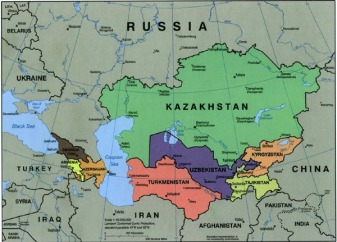
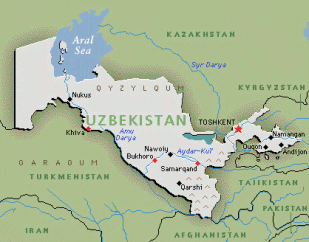
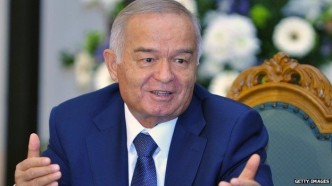
Uzbekistan is a double landlocked country in Central Asia with largest population in the region (about 29 million people; 80% of the population are Uzbeks. Other ethnic groups represented are Russian, Kazakhs, Tajiks, Karakalpaks. Main religion in the country is Sunni Muslim).
It is an authoritarian regime ruled by Islam Karimov who has been in power since 1989.

Uzbekistan is a member of the Commonwealth of the Independent States (CIS), Economic Cooperation Organization (ECO), Eurasian Economic Community (EURASEC), Central Asian Regional Economic Cooperation Initiative (CAREC), Shanghai Cooperation Organization (SCO) among others. Karimov’s concern about country’s security due the growing threat of Islamic Movement of Uzbekistan (IMU) and ongoing conflict in Afghanistan led to the closure of some borders with Tajikistan and served as a main reason to join the SCO.
After 9/11, Uzbekistan hosted the U.S. Military Base until 2005 (following the events of Andjijan massacre – video below) and currently plays an important role in NATO run Northern Distribution Network providing access to Afghanistan.
Uzbekistan largest export partners are China, Russia, Turkey and Kazakhstan. It has no significant export/import relations with neighboring Tajikistan and Kyrgyzstan, two of the poorest countries in the region.
Issues
Uzbekistan has many ongoing issues with its close neighbors, so called “water wars,” inter-ethnic conflicts, border demarcation disputes. It is also dealing with one of the biggest environmental disasters in the region, the Aral Sea 90% of which has dried up as the water flow from the two main rivers was diverted to irrigate the cotton fields (cotton was and still remains as one of the main export products).
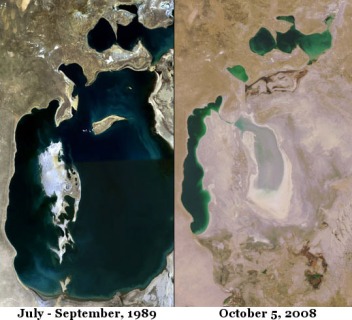
The United Nations Environmental Program has initiated numerous projects to address different issues stemming from the Aral Sea disaster. The United Nations Development Program and the European Union support a number of various initiatives and projects in Uzbekistan related to health, human resources, agriculture, business, education and law.
Uzbekistan’s main areas of concern are human rights issues, corruption, freedom of expression, lack of democratic efforts, to name just a few. Uzbekistan is placed 166 in both, Transparency International Corruption Perception Index (out of 176) and 2015 World Press Freedom (out of 180).
Culture and Traditions
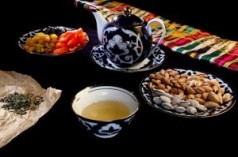 Uzbek people are very hospitable. Any visitors coming even for a short visit must have tea – tea pouring is a very important part of the “tea ceremony.” The less tea poured in the tea cup, the more respect is shown to the guest.
Uzbek people are very hospitable. Any visitors coming even for a short visit must have tea – tea pouring is a very important part of the “tea ceremony.” The less tea poured in the tea cup, the more respect is shown to the guest.
Respect for elders/seniors is ingrained from the childhood. It is even reflected in the language. Personal pronoun “you” has two forms, informal – used only for youngsters and close friends; and formal – used for older siblings, parents, educators and elders.
Major life milestones are always celebrated with one’s family, relatives and friends, such as a birth of a child, boy’s circumcision, wedding (which has several steps) and passing.
Uzbek Traditional Dances accompany many of the important events, weddings and many other special ceremonies.
Uzbek Traditional Fabrics,
Icat and Suzani are known worldwide
Uzbek Cuisine
is influenced by China, Persia and Russia
Silk Road Connection
Ancient historic monuments of Samarkand, Bukhara and Khiva are protected by UNESCO as World Heritage Sites.
Disclaimer: Pictures posted here are from various internet sites and used here for non-commercial purposes
Video Links:
Uzbekistan’s culture https://www.youtube.com/watch?v=oeRTyfAbA7c
Uzbek Traditional Dance https://www.youtube.com/watch?v=_VXByMiqg3A
Samarkand, Bukhara, Khiva – Silk Road https://www.youtube.com/watch?v=WtdKgMHjfRE
https://www.youtube.com/watch?v=WtdKgMHjfRE
https://www.youtube.com/watch?v=ynVIYn5iswk
UNDP projects in Uzbekistan https://www.youtube.com/watch?v=J2ih1zQeaJ4
Aral Sea disaster (BBC) https://www.youtube.com/watch?v=FzvEW1FHc60
Forced Child labor in cotton fields (CNN) https://www.youtube.com/watch?v=2fd_42VKfS8
Uzbek Human Rights Abuse Report (CNN) https://www.youtube.com/watch?v=roY20U_Ah-g
The Andijan Massacre of 2005 (trailer) https://www.youtube.com/watch?v=VUeq-g9kpp0

















Guljan, thank you for posting the pictures and for showing a culture I am not familiar with. The milestone celebrations that Uzbeks hold with their families sound fascinating. Other thing that called my attention is that the country does not have import/export relations with Tajikistan and Kyrgyzstan. I would think that if they are so close to each other they could benefit economically, even if they are poor countries. Anyway… thank you for sharing and cannot wait to read more!
LikeLike
Paola, thank you! Tajikistan and Kyrgyzstan and the two countries that Uzbekistan has “water wars” with. The former need water for energy (building water dams) and the latter needs it for irrigation.
Due to security concerns part of the border with Tajikistan remains closed. There are also ethnic tensions/conflicts between Kyrgyzs and Uzbeks. And integration of the region remains to be on the wish list…
LikeLike
Hi Guljan, amazing country! The pronouns and their uses sound very familiar. The “water wars” seem to be a conflict that we will be hearing more of in different parts of the world especially with growing populations and limited resources. Thank you for an insightful read.
LikeLike
Hi Adrian, thank you! Upstream-downstream water wars is a reality that each region deals with differently. If you look at the EU, the countries along the the Danube river were able to successfully resolve the issues of water sharing. The Nile Basin countries are in need of negotiating an agreement to be able to resolve the issue peacefully.
http://www.transboundarywaters.orst.edu/research/case_studies/Denube_New.htm
http://e360.yale.edu/feature/on_the_river_nile_a_move_to_avert_a_conflict_over_water/2855/
LikeLike